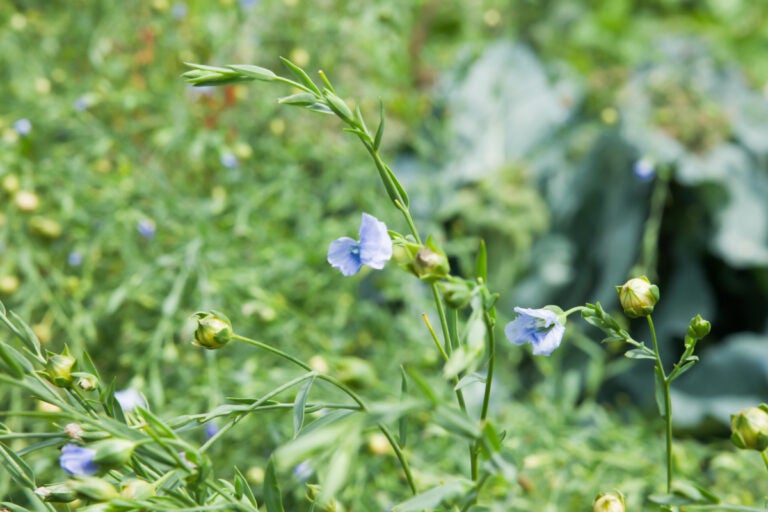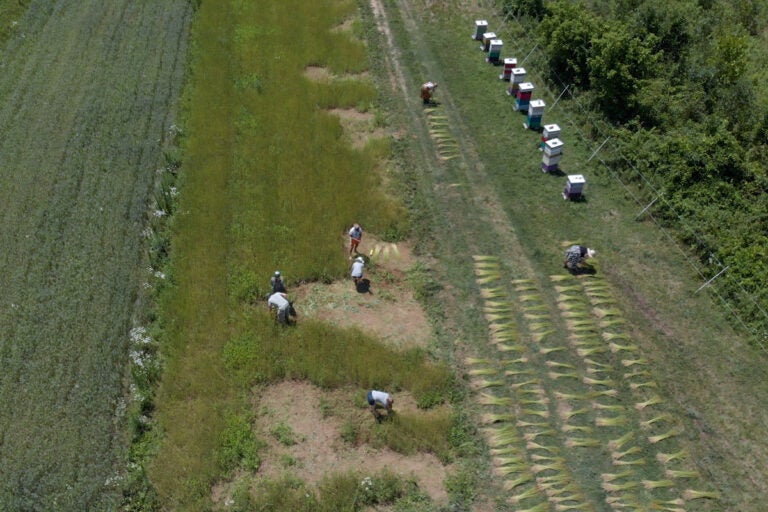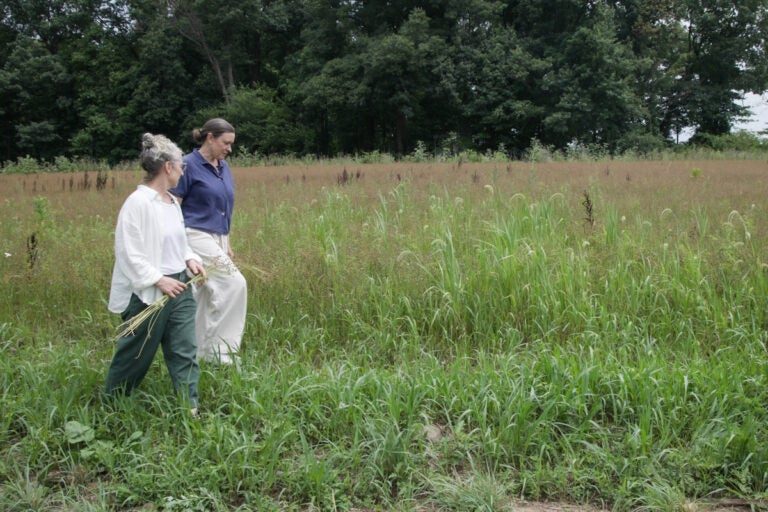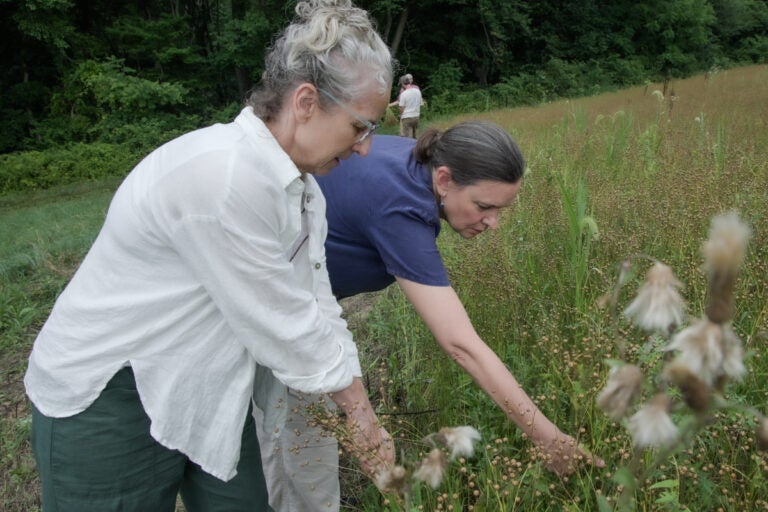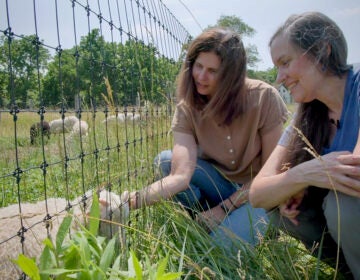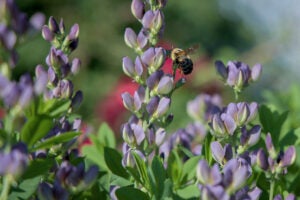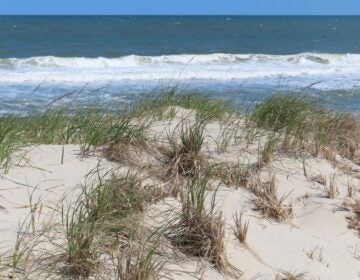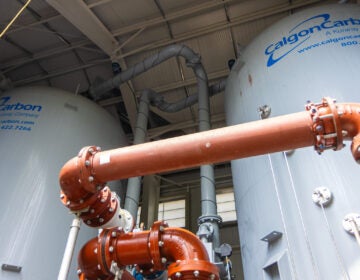Climate Fixers: The PA Flax Project wants to use a ‘climate-positive’ plant to transform the fashion industry
The cooperative of farmers and textile producers wants to jump-start flax production to provide more linen clothing as an alternative to fossil fuel-based synthetic fibers.
This story is part of the WHYY News Climate Desk, bringing you news and solutions for our changing region.
From the Poconos to the Jersey Shore to the mouth of the Delaware Bay, what do you want to know about climate change? What would you like us to cover? Get in touch.
Flax is not just a plant that produces seeds rich in omega-3. It’s also used to make linseed oil, a natural wood preserver, and the natural fiber linen.
“Flax has a really deep history in the state of Pennsylvania,” said Heidi Barr, founder and CEO of the PA Flax Project. “The flax seed first came to this continent with the Dutch and German settlers of Germantown, Philadelphia. Four of the original 13 colonizing families were in the linen trades.”
Barr explained that production of flax plummeted in the 1850s after the invention of the cotton gin. Cotton producers also benefited from the use of unpaid slave labor in the South.
“[Cotton] won the economic race at that time,” said Barr. “But [flax] has a proven history of growing well in this region.”
Barr is driven to bring flax back to the state as a climate solution and alternative to the dominance of modern synthetic fabrics made from fossil fuels.
“It’s 100% plant-based natural fiber. That automatically makes it better than a synthetic because it can be part of a regenerative agricultural cycle as opposed to an extractive system like drilling for oil. So as a plant-based fiber, it already has a leg up.”
Barr refers to flax as a ‘climate-positive’ plant.
“So on the farm, that means it doesn’t need fertilizer. It doesn’t need irrigation. So just with some sun and the humidity and rain, it grows really well. Meaning that it lends itself well to organic fiber production.”
A farm in Chester County devoted four acres to flax this summer as part of a pilot project organized by the PA Flax Project and funded by the U.S. Department of Agriculture to jump-start flax production. The ultimate goal is to get 12,000 acres devoted to flax production in the state.
On a warm day in July, Barr taught a couple dozen farmers interested in growing flax how to hand harvest the tall, thin stalks, which are topped off with a tiny blue flower when in bloom.
“In the breeze … it looked like waves. It was so gorgeous,” said Barr.
On this day, most of the blue flowers had become small, brown seed capsules.
“The harvest is actually really easy, so it’s pulled out by the roots. So you can just grab the plant and just pull straight up so that you don’t bend to the stem.”
Snapping off the short root, Barr pulls back on the stem to reveal the raw strands of fiber with fine hairs, which when processed, get spun into yarn for clothing.
“The PA Flax Project sees this as an opportunity to bring economic benefit to our farmers, and to reestablish a pre-existing industry here,” Barr said. “And it can be processed from field to fiber, 100% mechanically, using no chemicals at all.”
Linen clothing also has the benefit of being light, durable, long-lasting and absorbent.
“It has antibacterial qualities that come from the plant and remain all the way through processing it into fabric,” she said. “Then once it is spent at the end of its long life, it’s 100% compostable, so it can be returned to the Earth as an amendment to the soils.”
Barr has advice for anyone looking to cut their carbon emissions through their wardrobe.
“The first and most important thing you could do is to always choose natural fibers. So a plant-based or an animal-based fiber — linen, cotton, hemp, wool, alpaca.”
The second thing to do, she said, is try to get organically produced fibers.
“And then the third thing you could do would be to choose used over new [clothing] and to responsibly discard your clothing when you’re finished with it so that it doesn’t end up in a landfill. Meaning that you choose things that are compostable.”
In other words, clothing made of 100% linen that can be tossed into a compost bin.
WHYY is your source for fact-based, in-depth journalism and information. As a nonprofit organization, we rely on financial support from readers like you. Please give today.



